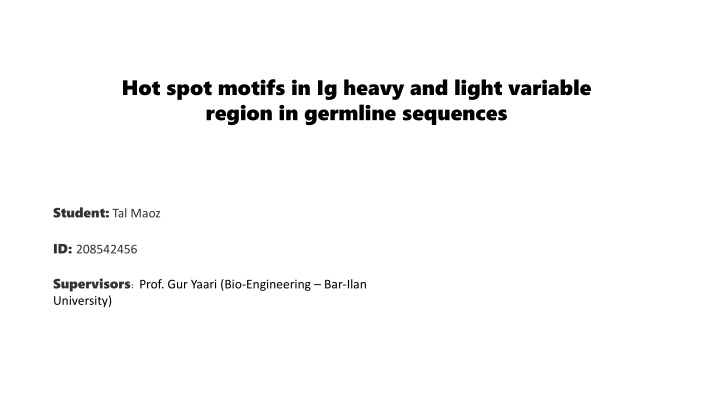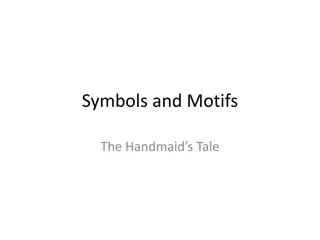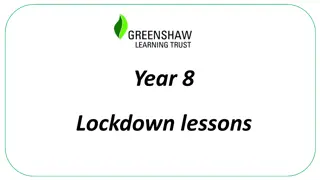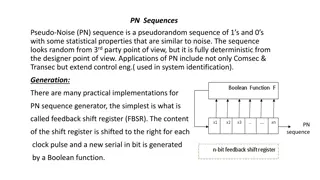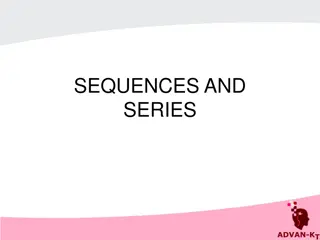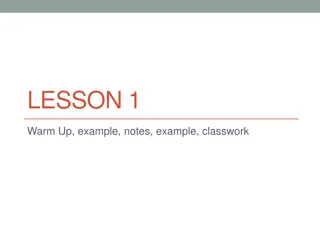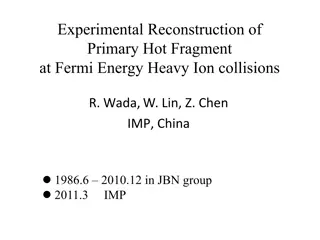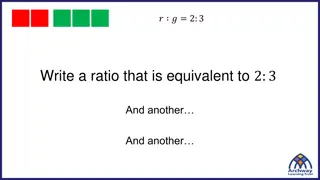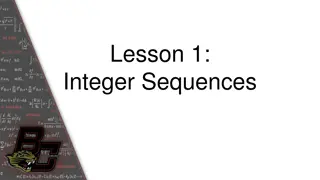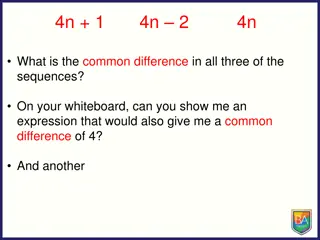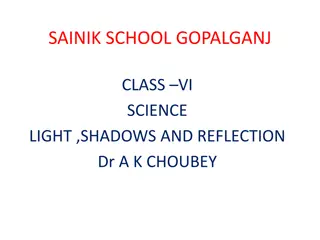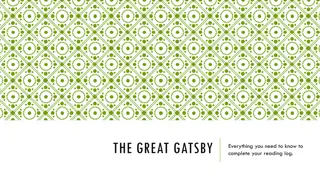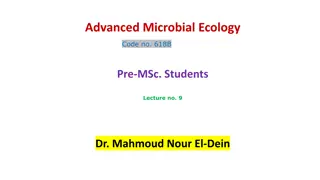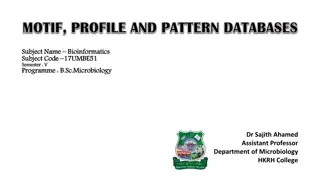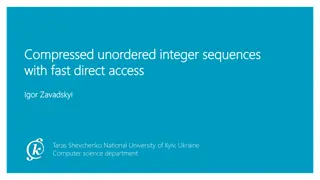Hot Spot Motifs in Ig Heavy and Light Variable Region Sequences
B cells express unique receptors to combat pathogens, with membrane-bound immunoglobulins forming their diverse repertoire. The regions of high variance, known as CDRs, play a crucial role in antigen binding. Ig genes contribute significantly to immune function, with recent studies revealing genetically determined biases in antibody repertoire. This project aims to analyze hot spot motifs in Ig heavy and light variable regions to understand CDR and FR diversity, motif frequencies, and correlations with the Shannon index. Utilizing germline sequences from the IMGT database and R programming, the study filters genes for analysis, shortens sequences for uniformity, and calculates diversity using the Shannon index.
Uploaded on Sep 24, 2024 | 1 Views
Download Presentation

Please find below an Image/Link to download the presentation.
The content on the website is provided AS IS for your information and personal use only. It may not be sold, licensed, or shared on other websites without obtaining consent from the author.If you encounter any issues during the download, it is possible that the publisher has removed the file from their server.
You are allowed to download the files provided on this website for personal or commercial use, subject to the condition that they are used lawfully. All files are the property of their respective owners.
The content on the website is provided AS IS for your information and personal use only. It may not be sold, licensed, or shared on other websites without obtaining consent from the author.
E N D
Presentation Transcript
Hot spot motifs in Ig heavy and light variable region in germline sequences Student: Tal Maoz ID: 208542456 Supervisors: Prof. Gur Yaari (Bio-Engineering Bar-Ilan University)
B Background ackground B cells express receptors (BCRs) to various antigens, each BCR is uniquely specialized to recognize and counteract a particular new or recurrent pathogen. This receptor is a membrane-bound immunoglobulin (Ig) consisting of a heterodimer of identical pairs of the Ig heavy and light chains, which are responsible for the clonal diversity of the B cell repertoire. There is concentrated regions where the variance is high, called complementarity-determining regions (CDRs). These regions are on the connecting loops of the beta strands of VH and VL and create the antigen-binding site in the antibody molecule. The rest of the regions have lower variance and are called framework regions (FRs). Ig genes are rarely considered disease susceptibility genes, despite their obvious and central contributions to immune function. Recent work has shown that strong genetically determined biases shape an individual s repertoire. It has also shown that a single codon change can alter the ability of an Ig gene to encode protective antibodies.
B Background ackground The huge diversity of the antibody repertoire is generated by two processes: V(D)J recombination - recombination of germline gene segments (V, D, and J for heavy chains, V and J for light chains) to create the B cell receptor (BCR). somatic hypermutation (SHM) - SHM occurs in antigen-activated germinal center B cells and contributes to antibody affinity maturation, by creating point mutations that may cause amino acid substitutions in the VL and VH regions. Current models of SHM consider activation-induced deaminase (AID), along with several DNA repair pathways, as critical to the mutation process. AID initiates SHM by converting cytosines to uracils, thus creating U:G mismatches in the Ig V(D)J sequence. If not repaired before cell replication, these mismatches produce C T (thymine) transition mutations. there are clear intrinsic biases, both in the bases that are targeted (Hot spot) and the substitutions that are introduced, Hot-spots include WRCY/RGYW and WA/TW where, W= (A, T), Y= (C, T) and R= (G, A). By analyzing germline Ig sequences, we can predict motif target sites to SHM.
Main goal Main goal The primary goal of this project is to examine the hot spot motifs in CDRs and FRs in Ig heavy and light variable region sequences . This was performed using the following steps: o Checking thediversity inCDRs and FRs. o Checkingif there is a difference in the frequency of the motifs in CDRs and FRs. o Checkingthe correlation between the number of motifs and Shannon index in CDRs and FRs. o Checkingthe correlation between the number of motifs and Shannon index in the positions. o Checking the preserve of motifs in the positions. Methods Methods The germline sequences have been taken from IMGT database. The entire sequences were analyzed by R (programming language). The genes were filtered so that the full and functional genes remained, and then were further shortened to a uniform length of 312 nucleotides (including gaps). after filtration, and removal of families with under 10 alleles, 232 IGHV alleles remained out of 411 and 47 IGLV alleles remained out of 104 alleles. The diversity calculated by Shannon index , when p is the proportion 2 between n-the number of one particular nucleotide found(A/T/C/G) to N-the total number of nucleotides in position and s is the number of positions.
Results Results- - Thediversity inCDRs and FRs. The diversity was calculated in each region from the same family, after filtration, removal of the positions where the number of gaps . was greater than 50% to reduce biases. In almost all families, it can be seen that the diversity in CDRs is higher than in FRs (Figure 1). The exceptions are CDR1 in IGLV2 (Figure 1A), its Shannon Index is 0.145 and CDR2 in IGHV4, its Shannon Index is 0.142 (Figure 1B). Figure Figure 1 1 : : A- The Average of Shannon Index in IGLV families By CDRs and FRs. B- The Average of Shannon Index in IGHV families By CDRs and FRs. C- The Average of Shannon Index in IGLV and IGHV families By CDRs and FRs.
Results Results- - The frequency of the motifs in CDRs and FRs. In IGLV, FRs is higher when the number of motifs is normalized by the number of alleles and normalized by both variables. Additionally, when the number of RGYW / WRCY motifs is normalized by the length of the region, it can be seen that the number in FRs motifs is higher but the number in TW / WA motifs is higher in CDRs (Figure 2). In IGHV, when the number of motifs is normalized by the number of alleles, the number of motifs in FRs is higher, like in IGLV and when the number of RGYW/WRCY motifs is normalized to both variables, FRs is High with minimal difference (0.056) than CDRs. However, CDRs is higher when the number RGYW/WRCY of motifs is normalized to the length of the region and when the number of TW/WA motifs is normalized to both variables (Figure 3). Figure Figure 2 2: The Number of motifs in IGLV by CDRs and FRs regions. A- Sum of the number of motifs normalized by the number of alleles in IGLV families (IGLV1, IGLV2, IGLV3). B-Sum of the number of motifs normalized by the average length of the gap-free region. C- Sum of the number of motifs normalized by the number of alleles and length of the regions. Figure Figure 3 3: The Number of motifs in IGHV by CDRs and FRs regions. A- Sum of the number of motifs normalized by the number of alleles in IGHV families (IGLV1, IGLV2, IGLV3). B- Sum of the number of motifs normalized by the average length of the gap-free region. C- Sum of the number of motifs normalized by the number of alleles and length of the regions.
Results Results- - The correlation between the number of motifs and Shannon index in CDRs and FRs. The correlation in IGLV alleles TW/ TW/WA motifs in CDRs WA motifs in CDRs (Figure 4A): p-value(CDRs) = 0.02353 and cor = -0.258. TW/ TW/WA motifs in FRs WA motifs in FRs (Figure 4B): p-value(FRs) = 6.075e-05 and cor =-0.282. RGYW/ RGYW/WRCY motifs in CDRs WRCY motifs in CDRs (Figure 4C): p-value(CDRs)=0.001724 and cor =-0.548. RGYW/ RGYW/WRCY motifs in CDRs WRCY motifs in CDRs (Figure 4D): p-value(FRs)= 3.157e-06 and cor = -0.409. Average Shannon index Figure Figure 4 4: : A- The correlation between the sum of TW/WA motifs in each 2-mers position from IGLV alleles to the diversity-Average of Shannon Index in the positions by the families in all 2-mers in CDRs. B- The correlation between the sum of TW/WA motifs in each 2-mers position from IGLV alleles to the diversity-Average of Shannon Index in the positions by the families in all 2-mers in FRs. C- The correlation between the sum of RGYW/WRCY motifs in each 2-mers position from IGLV alleles to the diversity-Average of Shannon Index in the positions by the families in all 4-mers in CDRs. D-The correlation between the sum of RGYW/WRCY motifs in each 2-mers position from IGLV alleles to the diversity-Average of Shannon Index in the positions by the families in all 4-mers in FRs.
Results Results- - The correlation between the number of motifs and Shannon index in CDRs and FRs. The correlation in IGHV alleles. TW/WA motifs in CDRs TW/WA motifs in CDRs (Figure 5A): p-value(CDRs)= 0.3104 and cor =-0.086. TW/WA motifs in FRs TW/WA motifs in FRs (Figure 5B): p-value(FRs)= 5.138e-05 and cor = -0.252. RGYW/WRCY motifs in CDRs RGYW/WRCY motifs in CDRs (Figure 5C): p-value(CDRs)= 0.9245 and cor =-0.0139. RGYW/WRCY motifs in CDRs RGYW/WRCY motifs in CDRs (Figure 5D): p-value(FRs)= 0.009682 and cor =-0.22. Figure Figure 5 5: : A- The correlation between the sum of TW/WA motifs in each 2-mers position from IGHV alleles to the diversity-Average of Shannon Index in the positions by the families in all 2-mers in CDRs. B- The correlation between the sum of TW/WA motifs in each 2-mers position from IGHV alleles to the diversity-Average of Shannon Index in the positions by the families in all 2-mers in FRs. C- The correlation between the sum of RGYW/WRCY motifs in each 2-mers position from IGHV alleles to the diversity-Average of Shannon Index in the positions by the families in all 4-mers in CDRs. D- The correlation between the sum of RGYW/WRCY motifs in each 2-mers position from IGHV alleles to the diversity-Average of Shannon Index in the positions by the families in all 4-mers in FRs.
Results Results- - The correlation between the number of motifs and Shannon index in the positions. Checking the correlation between the sum of motifs to the diversity- Average of Shannon Index in the positions shows us that positions with up to 50% motifs do not represent a certain pattern. It is not possible to conclude whether the more motifs there are means the diversity will be high or low. This is also the case when looking at positions where the number of motifs is between 50% -75%. However, when we look at the number of motifs in the range of 75%-100% (purple dots) we can see that the Shannon Index is low without exception (Figure 6 and Figure 7).
Figure Figure 6 6: : Only positions in which the number of motifs is greater than 0 are represented. A- The correlation between the sum of WA motifs. B- The correlation between the sum of TW motifs. C- The correlation between the sum of WRCY motifs. D- The correlation between the sum of RGYW.
Figure Figure 7 7: : Only positions in which the number of motifs is greater than 0 are represented. A- The correlation between the sum of WA motifs. B- The correlation between the sum of TW motifs. C- The correlation between the sum of WRCY motifs. D- The correlation between the sum of RGYW.
Results Results- - The preserve of motifs in the positions. Given the results, I also checked the percentage where the motifs appear in the total alleles. When (number of motifs in the positions/number of alleles)=1, it can be concluded that in all the alleles in the same position the motif appears. Since there is only one position in IGLV where the number of motifs is between 75\% -100\%, I focused on IGHV. Figure 8 demonstrates to us that there are positions in which the motif is very much preserved throughout all the alleles in the same family and beyond. They are kept in somewhat the same position in all the IGHV families I examined (IGHV1, IGHV2, IGHV3 and IGHV4).For example, the WRCY motif in position 307 (Figure 8D) appears in all IGHV1 alleles, 0.958% of IGHV2 alleles, 0.99% of IGHV3 alleles and all IGHV4 alleles. Figure Figure 8 8: Number of motifs in 2 (/) 4-mers position in IGHV, normalized by the number of alleles in each family. Only positions in which the number of normalized motifs is greater than 1 are displayed
Conclusions I have not been able to prove that there is a region where there is a high amount of motifs. I have not been able to link the number of motifs in different regions to the Shannon index. I have seen is that in the positions where the number of motifs is high, their diversity is low therefore I can conclude that the identity of the nucleotides is maintained relatively or completely in the motifs in the same position and there are positions where the motif is very well preserved in the same family and in several families. The number of IGLV alleles was relatively small and there are regions where there were more gaps so although the data were calculated relatively, the amount of data was smaller which could create biases. For further experimentation, I would recommend confirming my claim that the identity of the nucleotides is maintained in positions where the number of motifs is high and the diversity is low, examine whether the nucleotides appearing in motifs are more coding for amino acids of a certain type and try to examine in other calculations the difference between the number of motifs in CDRs and FRs and try to reach an unambiguous result.
